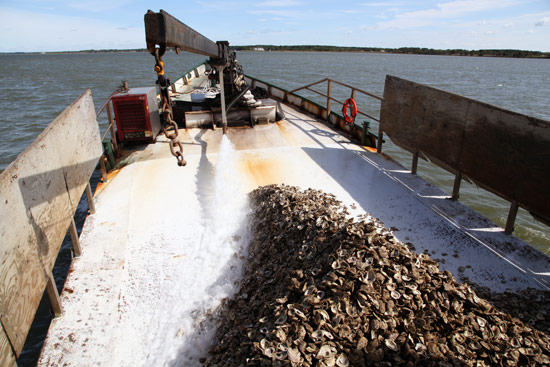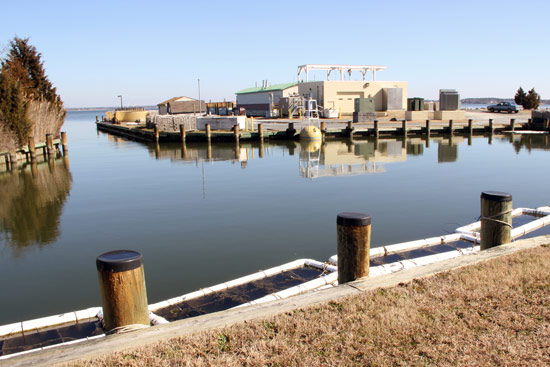Maryland partners plant more than 600 million oysters in the Chesapeake Bay
This marks the largest restoration effort the watershed has ever seen.
Restoration partners in Maryland have put more than 600 million oyster spat into the Chesapeake Bay in the largest targeted restoration effort the watershed has ever seen.
While habitat loss, disease and historic over-harvesting have contributed to a dramatic decline in native oyster populations, the peculiar bivalves that filter water, form aquatic reefs and feed countless watershed residents are critical to the Bay’s environment and economy.

According to a report from the Oyster Recovery Partnership, a portion of the 634 million oyster larvae that partners planted in 2012 went into the Upper Bay, where last year an influx of fresh water from spring rains and late-summer storms led to widespread oyster death.
But most of the “spat on shell”—or young oysters “set” onto large oyster shells—went into Harris Creek, a tributary of the Choptank River that was declared an oyster sanctuary in 2010. There, partners hope to restore 360 acres of oyster reef, constructing new reefs and seeding this habitat with spat; close to one-third of this goal has been planted so far.

To fuel restoration efforts, the Horn Point Laboratory Oyster Hatchery produced a record-breaking 880 million spat in 2012, marking the fifth year in a row that spat production has exceeded half a billion. The largest hatchery on the (east coast), the Cambridge, Md., lab produces disease-free oyster larvae for use in research, restoration, education and aquaculture.
Horn Point Laboratory will host an open house on Saturday, October 13.

Comments
There are no comments.
Thank you!
Your comment has been received. Before it can be published, the comment will be reviewed by our team to ensure it adheres with our rules of engagement.
Back to recent stories